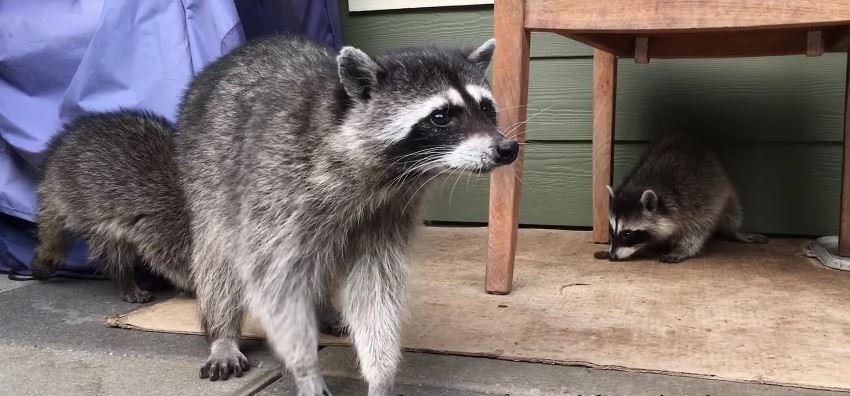What to Do About a Raccoon on the Roof

Roofs are one of the most favorite places raccoons set up a nest and live through the winter. The creatures are quite good when it comes to climbing, and their curiosity made them climb a tree branch or the roofline enabling them an access to your roof. If you left something which could be recognized by the pest as food, then you have developed a new raccoon problem. A tight gap between the wood would be the perfect den for the animal. If it takes the initiative, it could tear up a hole by itself, however, and create a nest on its own. Identifying the Nuisance
To start dealing with the problem, you would first need to make sure of its existence. Raccoons living on your roof would leave out a lot of clues such as feces on the floor, a terrible odor from their urine, scratches, and marks in the wood or torn up insulation. Noises would also be a good clue to go with. Due to the size of the creature raccoons will be heard while moving in the night, which is the time in which they are active. Not only that, but the creatures are actually quite vocal – cries and growls will easily be singled out, and in case there are babies up there, you would hear the distinctive cry of the babies.
Often a raccoon living in the attic is straight up seen by the home owner. While their climbing abilities are quite advanced, they are not swift or silent animals.
Dealing with the Raccoon
You have managed to prove the existence of the problem – so how do you proceed now? First of all, you should go through the whole area and find every single point of entry or exit the creature could have to the roof. That could be quite complicated as raccoons can move through quite small gaps regardless of their large size. Once you have located all of the entrances, seal all of them off. It is important that all of the entrances or exits are sealed off. Go to your closest hardware store and buy a live cage which will be used to capture the animal. The live cage is the most common tool used for raccoon captivity, its large metal design ensures to trap more than a single raccoon without any harm coming to both you and the animal. You should “install” the trap in front of the most commonly used entrance point and open it. Once the animal tries to leave, it will go inside the cage and get after which you could safely relocate it.
Dealing with a raccoon is rarely easy, and it is important to clean up after its removal. The damage it could have caused is also unpleasant but could be fixed with a proper restoration process. Be sure to take the appropriate measures when doing both of these activities and to take further precautions so no raccoon would want to come to your property again.
Read the How to get rid of raccoons page for helpful information and to learn more about What to Do About a Raccoon on the Roof

